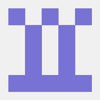Exploring Docker and Kubernetes has been a fascinating journey. We've uncovered tools that boost performance, elevate experiences, and turn mundane tasks into thrilling adventures. Let's get started with the top ten exciting tools for DevOps in 2024! 🚀
1. Dagger.io
From the early days, I’ve been closely following the Dagger project with great enthusiasm. It promised to elevate Docker to new heights, addressing the notorious “It works on my machine” dilemma and enabling developers to construct pipelines locally. Initially, Dagger utilized CUE for communication with its engine. Now, the platform has evolved to support a variety of languages like GO, NodeJS, and Python, allowing for the creation of comprehensive CI/CD pipelines that operate consistently both locally and in the cloud. Additionally, Dagger has introduced modules, akin to functions, that you can incorporate into your pipeline. These can be stored on GitHub in what is known as the Daggerverse. Moreover, these modules can be executed independently using the dagger call command, enhancing modularity and reusability.
Website: Dagger.io
Documentation: Dagger Docs
Deep Dive: Argo Workflows with Dagger
2. Nix
The tool that excites me the most on this list is Nix! It holds the second top position because it is not yet fully optimized for efficient use in CI pipelines. Nix is a unique package manager designed for Unix systems, utilizing its own language, Nix, to define and manage software with guaranteed reproducibility and allows you to specify exact versions for dependencies through Nix flakes. I envision the ability to execute a comprehensive pipeline in Nix, breaking it down into various phases, which can be independently run using the command nix develop --command. This method allows you to execute your pipelines both locally and on the Cloud, similar to Dagger, without relying on Docker! However, it has not achieved this level of functionality yet. The Dagger Team places emphasis on performance and boasts a much gentler learning curve as it does not necessitate learning a new language.
Documentation: Nix
Deep Dive:
nix3
nix develop
Nix for CI:
Garnix
Hercules CI
NixOS Hydra
3. Devbox
Devbox is an abstraction on top of Nix that simplifies the process of setting up development environments. It’s tailored specifically for this use case and aims to be much more user-friendly. With Devbox, you can define your development environment with a simple JSON config file, without the need to become a Nix expert. I attempted to utilize NixOS within a Docker container to establish an interactive development environment and manage my dependencies using Nix. However, I found that using Devbox streamlined the process significantly, as it allowed me to effortlessly create a Dockerfile using the command devbox generate dockerfile
Website: devbox
Documentation: devbox docu
Deep Dive: generate dockerfile
4. KCL
Actually I wanted to add timoni in the list which is a package manager for Kubernetes powered by CUE but I guess KCL will win the race of a better Helm idea.
KCL (Kubernetes Configuration Language) is an open-source, constraint-based record and functional programming language designed to manage Kubernetes configurations . It aims to improve modularity, scalability, and stability around configuration management. KCL provides several benefits over traditional tools like Helm.
In comparison to Helm, which is an imperative templating tool that manages Kubernetes packages called charts, KCL allows direct writing of configurations in code, thus eliminating the need to read and edit basic YAML files.
Overall, KCL can replace Helm by providing a more robust and error-resistant way to manage Kubernetes configurations, with the added benefits of code reusability and better validation mechanisms.
Website: KCL Lang
Documentation: KCL Docs
Deep Dive: Generate Manifests
Helm KCL Plugin
5. Lens
Kubernetes, while powerful, can present a steep learning curve due to its complexity and the multitude of kubectl commands required for effective operation. For those who appreciate simplicity and efficiency, Lens IDE emerges as a highly recommended solution. As an integrated development environment tailored for Kubernetes, Lens IDE offers a user-friendly interface that streamlines the management of components, events, and monitoring. It simplifies the editing of configurations, making it accessible even for those less familiar with Kubernetes intricacies.
One of the standout features of Lens IDE is its capability to manage multiple clusters with ease. By simply adding your kubeconfig file, Lens IDE allows you to switch between different clusters seamlessly. This feature is particularly beneficial for developers and system administrators who need to interact with various Kubernetes environments.
Lens IDE is not just a tool; it’s a strategic investment in your Kubernetes journey. It transforms Kubernetes complexity into clarity, empowering teams to focus on what matters most—building value.
Website: Download now and thank me later!
6. Arkade
Arkade is an open-source marketplace for Kubernetes apps, tools, and CLIs, designed to simplify the process of installing development tools and Kubernetes applications. It provides a streamlined command-line interface (CLI) that allows developers to quickly install their favorite CLI tools and Kubernetes apps without the need to manually search for and manage Helm charts.
Whenever I’m setting up Kubernetes applications such as cert-manager and nginx-controller on a new cluster, I prefer the convenience of Arkade for a hassle-free installation. With just a couple of commands, I can get these apps up and running:
arkade install ingress-nginx
arkade install cert-manager
Arkade streamlines the process, transforming what could be a complex task into a simple and efficient one.
Documentation: Arkade Docs
Deep Dive: Blog
7. Infisical
Infisical is a secret management platform designed for Kubernetes, which serves as a secure repository for sensitive data like API keys, certificates, and passwords. It’s particularly useful in Kubernetes environments where managing and injecting secrets into applications can be complex and security-critical.
The Infisical Secrets Operator is a Kubernetes controller that retrieves secrets from Infisical and stores them in a designated cluster. It uses an InfisicalSecret resource to specify authentication and storage methods, and it can automatically update secrets and reload dependent deployments.
Additionally, Infisical boasts a user-friendly WebUI built with Next.js, which simplifies the management of secrets across different environments and projects. This WebUI allows users to interact with the Infisical platform visually, making it easier to manage secrets without delving into command-line operations.
Website: Infisical
Documentation: Infisical Docs
8. Crossplane
Crossplane is an open-source Kubernetes add-on that extends the capabilities of Kubernetes to manage and compose infrastructure, services, and applications from multiple cloud providers. It allows you to define your infrastructure directly within Kubernetes using a declarative YAML syntax, treating cloud resources as first-class citizens in Kubernetes.
The key feature of Kubernetes that Crossplane utilizes is the control loop, which operates on the principles of observe, differentiate, and act. This means Crossplane continuously monitors the state of the infrastructure, compares it with the desired state defined in the code, and takes necessary actions to align the two. This approach ensures that any drifts in the infrastructure are automatically corrected, maintaining the desired state as defined by the user.
Website: Crossplane
Documentation: Crossplane Docs
9. Chainguard
Chainguard is a company dedicated to enhancing software supply chain security. It specializes in ensuring Kubernetes clusters deploy only trusted container images. Their product, Chainguard Images, offers minimal and hardened container images with no known vulnerabilities. The use of such minimal base images, akin to Alpine Linux, is crucial due to their smaller size and reduced potential for security risks.
Chainguard provides tools like wolfi-base to help developers build secure Docker images with minimal base images, offering a hardened alternative to traditional options like Alpine Linux. This approach is crucial for maintaining security and efficiency in containerized environments.
Website: Chainguard
Image Gallery: Chainguard Images
Deep Dive: Wolfi Image
Distroless Images
10. Amazon Q Developer
Amazon Q Developer is an AI-powered assistant for software development provided by AWS. It offers a range of features to enhance the coding experience, including real-time code suggestions, assistance with complex tasks through autonomous agents, and the ability to modernize legacy code. It’s designed to be integrated into various IDEs, including Visual Studio Code, making it accessible right within your coding environment.
Compared to GitHub Copilot, which was initially trained on data up until September 2021, Amazon Q Developer might have an advantage in terms of having access to more recent data and AWS-specific knowledge. However, it’s important to note that GitHub Copilot has been updated since then. As of November 30, 2023, GitHub Copilot Chat is powered by GPT-4, and it introduced new features like code referencing in VS Code and the concept of “agents” to assist with specific tasks.
Both tools are designed to work within VSCode, providing inline code suggestions and other productivity-boosting capabilities. The choice between the two may come down to specific needs, such as preference for AWS integration with Amazon Q Developer or the broader coding support offered by GitHub Copilot.
Website: Amazon Q Developer
Deep Dive: Youtube Video








Top comments (0)